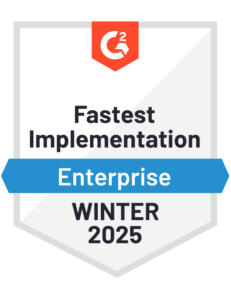So, You Think Your ERP Can Do Matching?
Blog post
Share
Discover 5 Reasons to Invest in a Purpose-Built Matching Solution
Enterprise Resource Planning (ERP) systems are designed to integrate various business processes and functions into a centralized system of control. Despite the fact they can usually handle straight forward matching tasks such as bank reconciliations (although not necessarily comprehensively), they are invariably not capable of dealing with more complex requirements that often arise due to items such as; number of transactions, number of source systems, data quality, etc.
If your team is spending their time manually matching transactions, your organization is missing an opportunity for efficiency gains. By using a ‘best-in-breed’ purpose-built solution, companies can benefit from a higher auto-matching rate, providing valuable time back to focus on what matters most.
Below are 5 reasons why you should consider investing in a purpose-built matching and reconciliation solution rather than try to fit your requirements around the standard capabilities of your ERP system.
1. Lack of Functionality
For more complex matching requirements, the degree of automation is often defined by the quality and depth of the matching capability that’s available to configure matching rules. When multiple data sources are involved—such as purchase orders, invoices, receipts, and payments—matching these transactions requires sophisticated algorithms and logic to ensure accuracy and high auto-match rates.
Many businesses have complex rules governing how transactions should be matched, such as through discounts, rebates, and other bespoke pricing agreements. A matching solution should provide the technical capability to match one to one, one to many, and many to many type scenarios and it should also have the ability to match using multiple fields rather than being limited to date and value.
Generative AI (GenAI) now provides a huge opportunity to suggest complex matching associations, but it first needs to learn how to do this—and having the capability to create complex matching associations is the quickest way to teach it. Furthermore, it also needs to provide full traceability/audit trails to ensure there is adequate control and visibility over the process.
2. Data Quality
ERP systems rely heavily on accurate and consistent data. If the data entered into the system is incomplete, inconsistent, or inaccurate, it can lead to difficulties in matching transactions effectively. Furthermore, complex reconciliations also require data to be matched with external systems and this often means that there is a challenge with the quality of data available to match.
The most effective way to deal with these inconsistencies is to ensure you have the ability to enrich or transform your data—so called Extract, Transform, Load (ETL) capabilities—to maximize auto-rec rates. This may include the need to roll-up or group individual transactions on one side to match summary or balance level data on the other side. Similarly, it may also include the need to use concatenation to select specific variables within longer data strings and use them to create more specific match rules.
Unique identifiers are often missing from data which needs to be created from scratch to have any chance of matching at all. Application/API lookup tables provide a way to accurately create these missing data points. This is not something that is readily available in an ERP system and would require the use of an intermediary application such as Excel to complete the required mapping.
3. Inconsistent Data Formats
It’s taken for granted that data files need to be in a machine-readable format to be read and processed effectively. However, many ERPs struggle to deal with file formats in anything but the most straight forward flat file extensions (.txt, .csv, etc). It’s still common for source files to require some kind of manipulation to convert them into supported file formats and this adds an unwanted overhead to the process.
Despite the fact this conversion can be automated using third-party applications, a purpose-built reconciliation solution provides out of the box capabilities to deal with more complex source files such as .xlsx without the need for any pre-conversion work. Even if a particularly unusual file format is not ‘supported’, it is very likely that a specialist solution will do a more comprehensive job to automate the file conversion process.
For those who have invested in GenAI, it is also now possible to read and create input files from non-machine-readable source files such as PDF documents — a bit like Optical Character Recognition (OCR) on steroids.
4. Transaction Volumes
ERP systems are purpose-built to deal with large transaction volumes for recording and reporting purposes on a daily basis. However, depending on the complexity and size of requirement, managing and matching large volumes of transactions can be challenging for ERP systems, especially if they lack scalability or processing power/resources. Ultimately, this may impact performance in a production system if not scoped and sized adequately.
Specialist matching and reconciliation solutions have been designed to cater with transaction volumes in mind, but not all are created equal. For example, certain business verticals including retail, financial institutions, and government agencies process millions of transactions each year and the matching process is often a critical input into downstream activities that impact the close. Indeed, the endeavour to transition towards a continuous close process by many forward-thinking businesses is contingent on reliable, daily reconciliations that remove the work burden on accounting teams at month-end (including open item management, intercompany and treasury reconciliations, etc.).
5. Integration Challenges
ERP systems often need to integrate with other systems and platforms, such as e-commerce platforms, supply chain management systems, and banking systems. Ensuring integration and data synchronization across these systems can be a challenge, affecting the ability to match transactions effectively.
Purpose-built matching solutions provide pre-built ERP connectors and open APIs to provide seamless integration across multiple systems without the need to invest time and money on file extract routines that quickly become outdated with changes in the business and/or third-party systems such as bank file format changes.
Conclusion
Time is precious – once it’s gone, it’s something you’ll never get back. It’s imperative that we all use our time wisely and focus on the tasks and activities that provide the most value to our lives. Trintech’s purpose-built suite of matching solutions has been developed to cater for specific industry requirements across both enterprise and mid-market spaces. We provide a world-class average 85% auto-rec rate to help our customers reduce time spent on identifying manual matching associations, reduce the impact of human error, and to free up time to focus on resolving exceptions and delivering higher value activities. Make time count with Trintech.
Written by: Scott Vipond, Managing Director – EMEA






